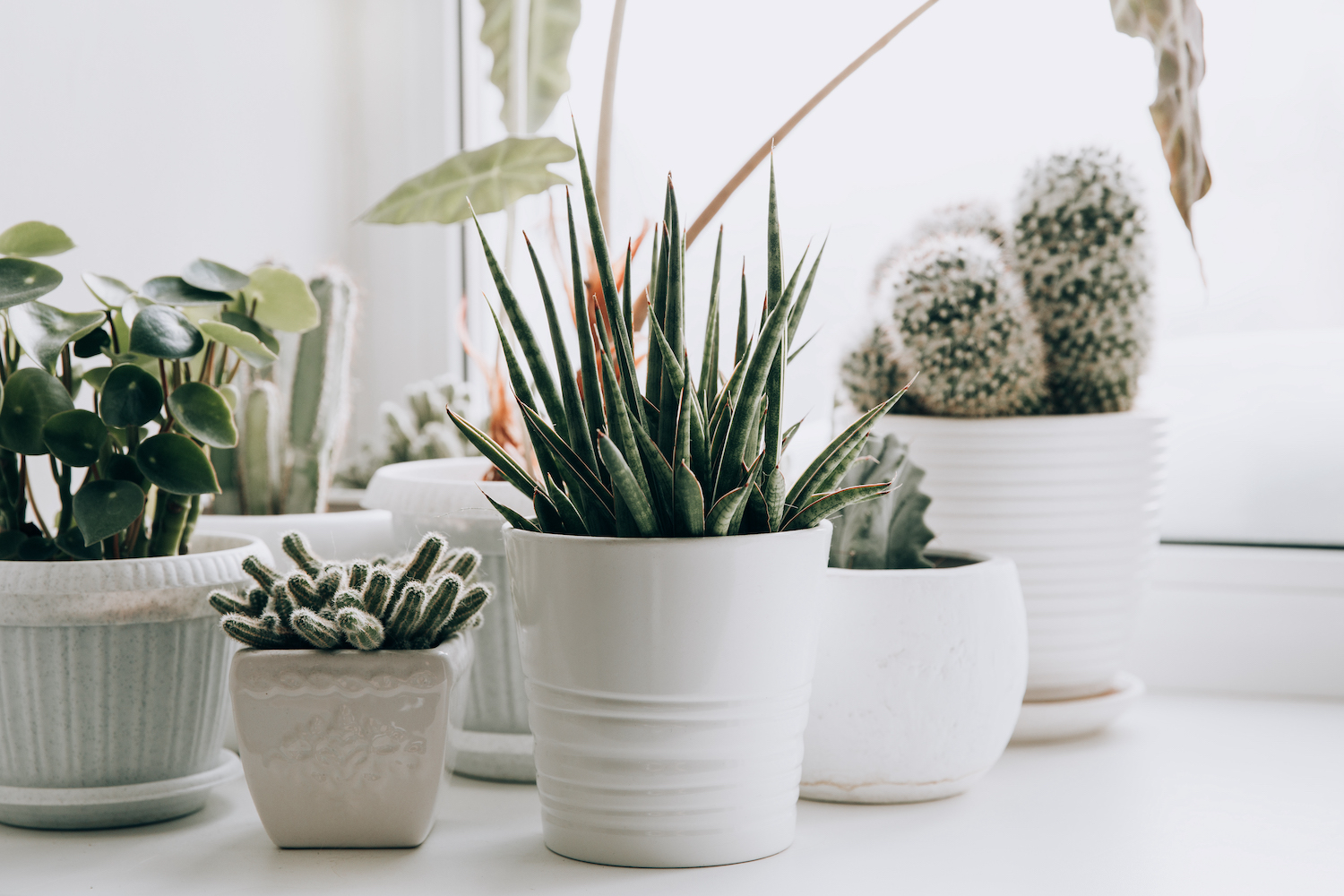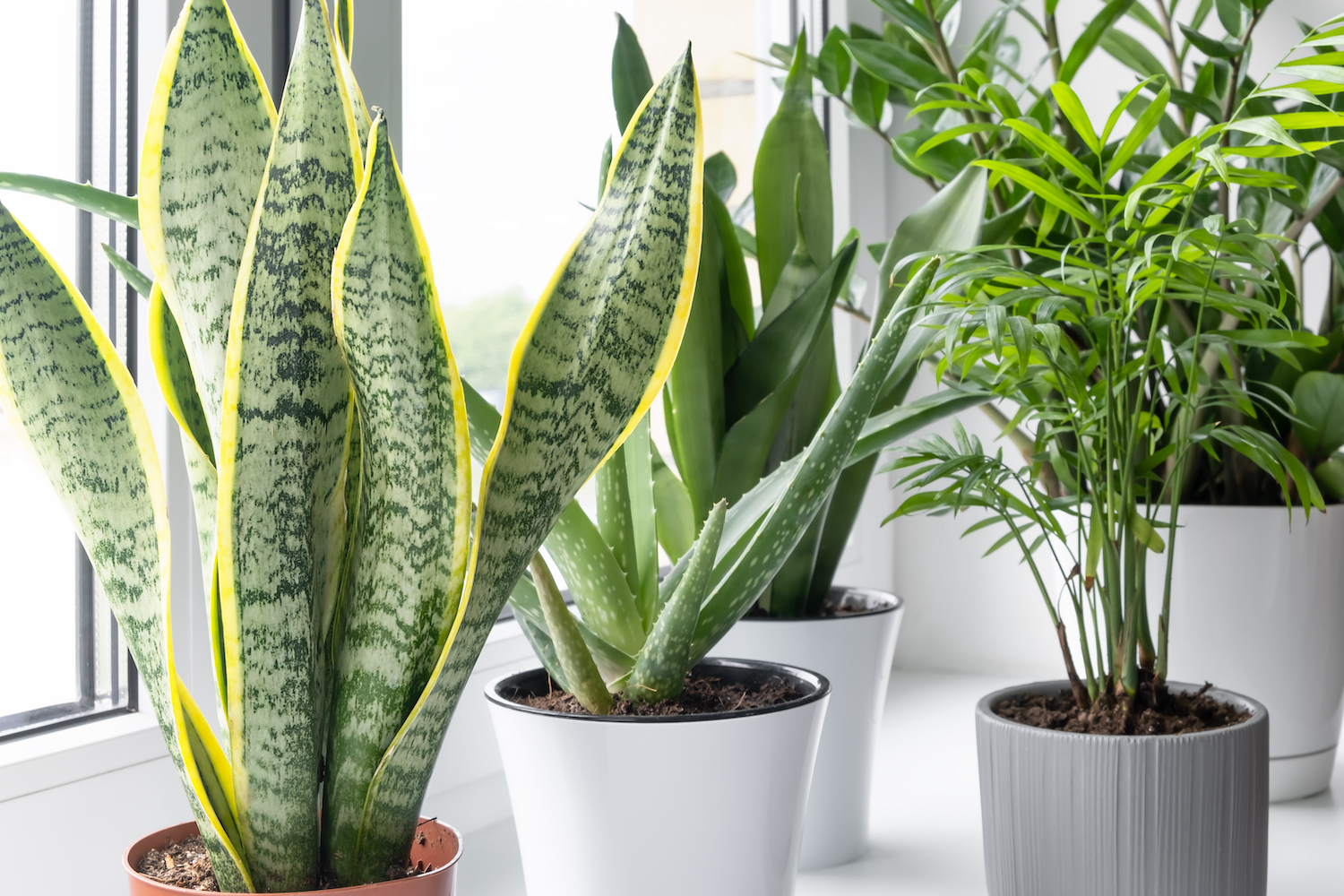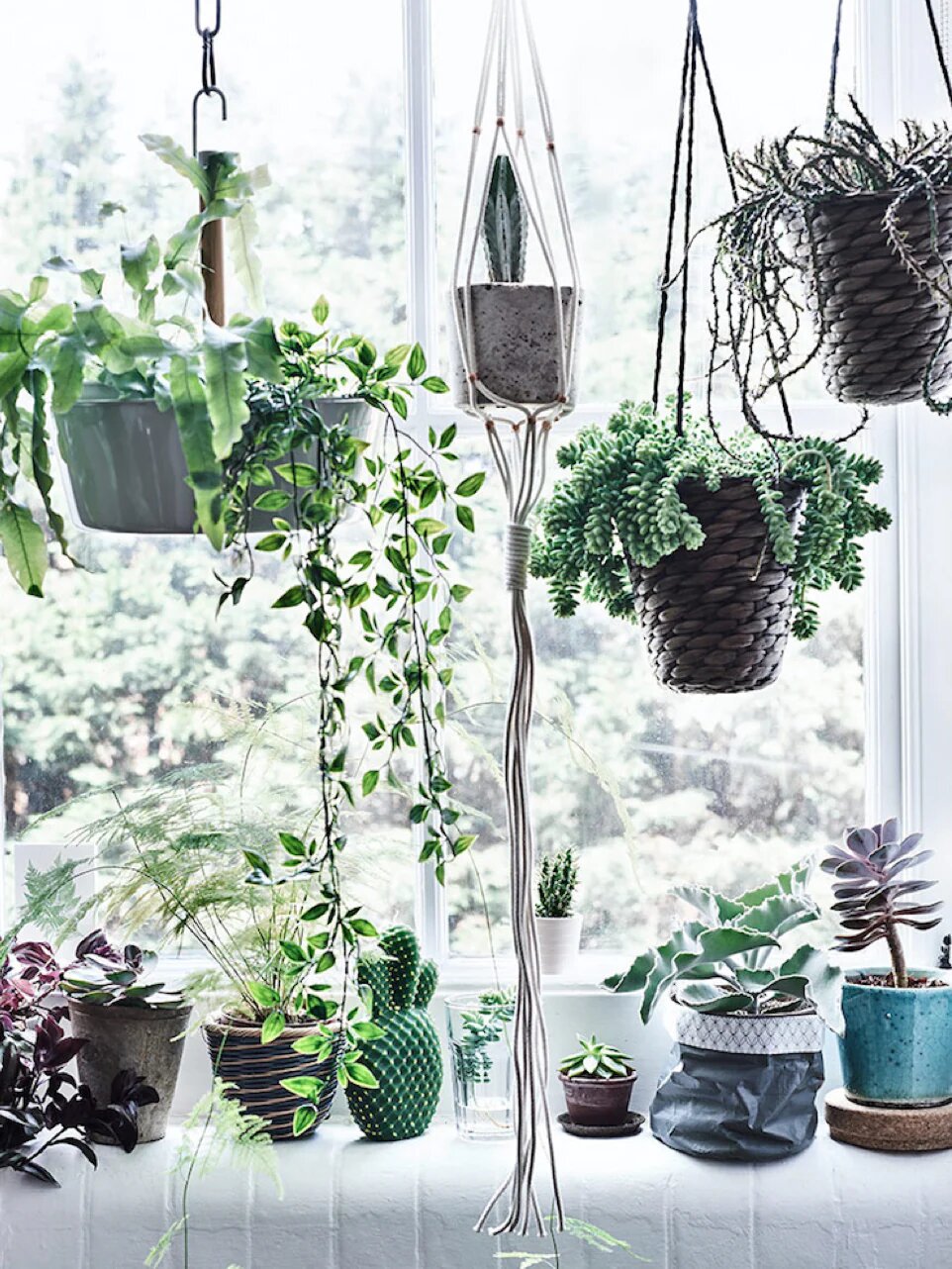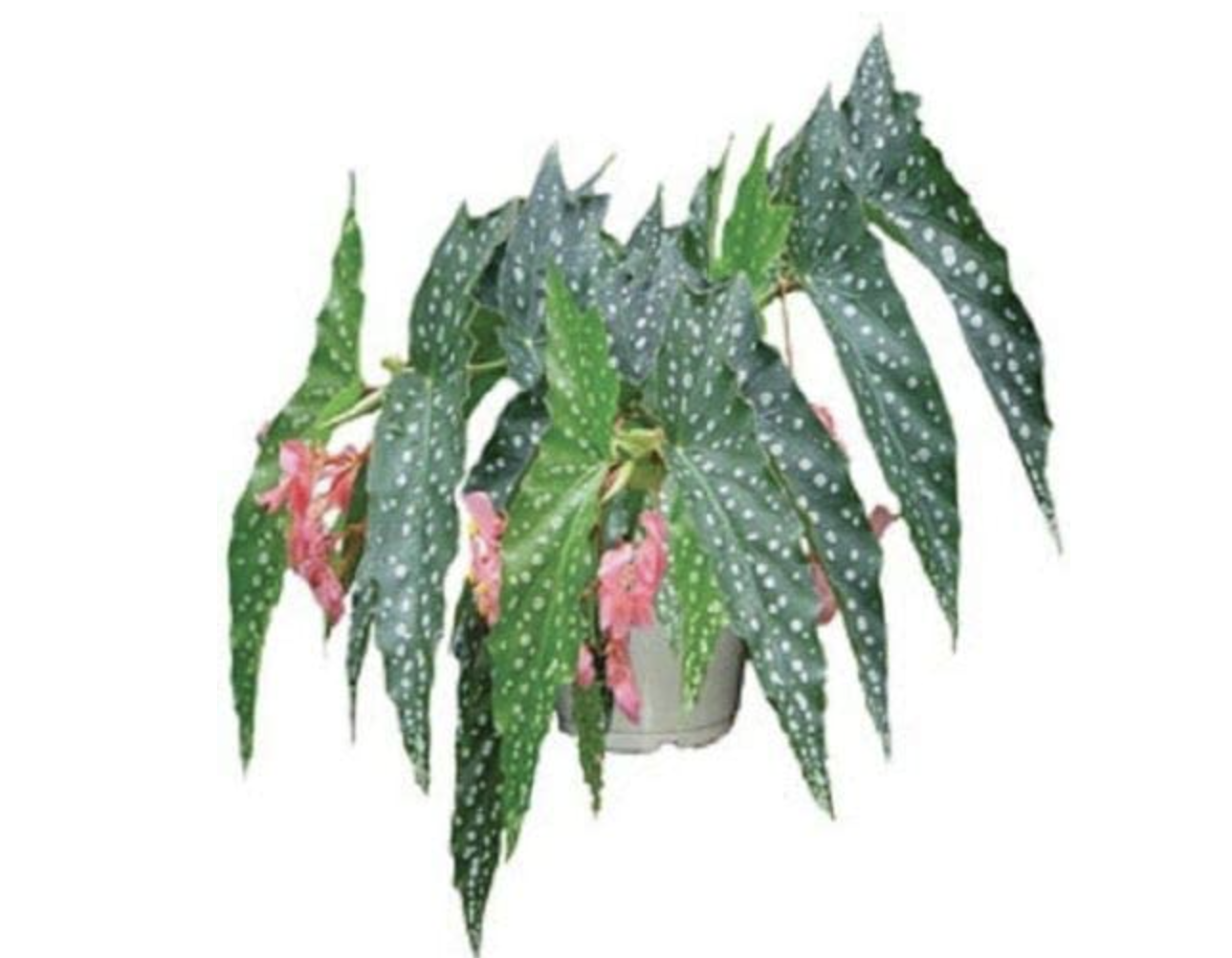'They're ideal!' How to turn your windowsill into a thriving indoor garden with the perfect plants for your space
One windowsill is all you need for a thriving indoor garden, and these are the foliage and fronds experts say will guarantee you success

Compact living means being clever with space, such as ditching unnecessary adornments for multi-functional pieces. This needn't mean living without plants though. House-plants bring a room to life, so knowing how to create an indoor garden on just one windowsill is a simple way to inject personality into a small space.
Of course, you can just buy a couple of houseplants randomly but a little forethought goes along way. Especially when it comes to helping your plants to thrive and bring vibrancy to your home.
Different plants have differing requirements, so it helps to group those with similar needs together. Although all plants need light to photosynthesise, some prefer more sunshine than others.
'It all starts and ends with light,' says plant expert, Hilton Carter in his latest book, Living Wild, published by Cico. 'Light plays such an important role in the health and vibrancy of plant life that pretty much every plant-styling decision I make is based on it.'
How to create an indoor garden on just one windowsill
Taking the practicalities into account, as much as the aesthetics, will make indoor gardening more enjoyable. A row of healthy foliage that's easy to maintain is so much more rewarding than sad plants with brown leaves not suited their spot.
'Windowsills often provide ample light and access to fresh air, making them an ideal location for a variety of plants,' says Nick Sandford, founder of Leaf & Clay.
1. Consider the aspect of the room

When choosing plants for your home, considering the aspect of the room may not have occurred to you. Yet the direction that natural daylight comes in can make the difference between your plants thriving or die-ing. This is particularly important when you're arranging them on a windowsill.
The Livingetc newsletters are your inside source for what’s shaping interiors now - and what’s next. Discover trend forecasts, smart style ideas, and curated shopping inspiration that brings design to life. Subscribe today and stay ahead of the curve.
'The aspect of a room will dictate the quality of light that enters,' explains Hilton Carter. 'A northern-facing room will never receive direct sunlight, so plants that require direct sun won’t thrive there. Instead, I’d choose plants like Ferns, Peperomias, Anthuriums, Orchids, and Alocasias.'
'The same principles apply when considering plants for a west-facing room. The sun is at its hottest in the afternoon, so once it finds its way through a west-facing window, it will be harmful to plants that don’t like direct sun. In such a space, I’d go for cacti, succulents, Ponytail Palms, Crotons, or Olive trees.'
'Succulents, such as Echeveria, Jade Plant, and Haworthia, are perfect for sunny window sills,' adds Nick Sandford - they're also some of the best plants for a lush indoor garden. 'These plants require ample light, can tolerate direct sunlight, and are low-maintenance and drought-tolerant.
'A great option for kitchen window sills is herbs, like basil, mint, and parsley. These aromatic plants thrive in well-lit conditions, with some preferring more sunlight than others. Additionally, they offer the added benefit of being edible.'
'For windowsills that do not receive direct sunlight, ferns, such as Boston Fern and Maidenhair Fern, can be an excellent choice. These plants prefer indirect light and higher humidity levels.'
'Find which direction your windows point using a compass app on your smart device,' says Paris Lalicata, plant expert at The Sill.


2. Group plants according to their likes and dislikes

Once you've established which direction your room and windowsill face and the types of plants that could happily live there, check what else they need to thrive.
It will make life much easier if they all need a weekly water, or a monthly mist. Instead of having to remember who likes a drench and who doesn't.
'The first consideration in creating a simple windowsill garden, is to pick a collection of plants with the same light needs,' says Alex Bates, co-founder of Bloomist. 'However, watering and caring for your windowsill garden also requires some forethought.
'If you intend to water your plants in place, be sure to get a watering can with a long spout for hard to reach angles and make sure you use trays or saucers under your pots.
'You can also get copper or aluminum trays the length and depth of your sill at garden nurseries for a cleaner look. These can be filled with a shallow layer of pebbles to allow standing water to collect and support humidity sensitive plants like ferns or orchids, while protecting your windowsill.
'When choosing your plants, do also consider any potential physical limitations,' adds Alex. 'Is privacy a consideration? How high can you keep the blinds up to insure sun access and not knock into the plants? Are cats a factor - will they play with the tempting hanging vines? Be sure to take cat safety into account when picking your plants.'
3. Balance shades of green

Although there are many easy flowers you can grow on a windowsill, think about the mix of green tones you'd like to create.
'The best way to get the most out of your plantscapes is to work in different shades of green,' says Hilton . 'These variations add depth and contrast both between the plants and the other elements that surround them.
'So it’s key to be selective when pushing plants next to each other, just as you would be when placing two paint colors side by side on a wall or two different patterns of throw pillows on a couch.'
'We always love a tonal statement and like the mix of similarly-colored houseplant leaves, such as all blue-grey green leaves or yellow green leaves), interspersed with small orchids and / or trailing vines for a cohesive but interesting collection,' says Alex at Bloomist.
'Mix in a few plants with dramatic foliage to punch up your mix. Our favorites are the playful polka dots of Angel Leaf Begonias and the swirling, Dr. Seuss-ical Rex Begonia species: Escargot or a Calathea Pinstripe.' These also happen to be some of the best low maintenance plants for indoor gardening.
4. Place or hang at differing heights

Much like when planning the planting in a backyard, (although on a far smaller scale), choosing plants of differing sizes and heights will add interest to your display. This can be further enhanced by hanging some trailing varieties.
'To create a visually appealing and stylish window sill display, a combination of thoughtful arrangement and plant selection is essential,' says Nick at Leaf & Clay.
'Combining plants with different heights and growth habits, such as trailing Pothos with upright-growing Jade Plant can add visual interest to the display. Pothos and Philodendrons are also suitable for window sills, as they can adapt to various light conditions and help purify the air.
'Instead of organizing plants in even-numbered groups, opt for odd-numbered groupings to create a more dynamic and visually engaging arrangement. Adding layers to your arrangement using risers, stands, or stacked books can also introduce depth and dimension to your window sill garden.'
'Many plant parents limit themselves to just the windowsill but there are ways to maximize the space,' says Paris Lalicata, plant expert at The Sill. 'Utilize plant stands to elevate plants off the ground and into the window. You can also use wall planters, ceiling hangers, or even install shelves on your windows to make most use of them.
'Just be mindful that plants directly in the window don't block too much light for plants that may be placed behind them. It's ideal to place smaller plants directly into the window sill and larger plants that tower above behind them so all plants get equal light exposure.'
5. Select a good mix of planters

'The planter is the outfit in which you dress your plant,' says Hilton. 'Just as it’s important only to bring in plants that can thrive in the light conditions your space provides, it is also crucial to give that plant a pot made from the right material.
'For example, if you own a cactus or Ficus that needs its soil to dry out quickly after each watering, you’ll want to place it in a porous container made of concrete, clay, or terracotta.
'But if it’s a plant such as a Peperomia that is looking to have its soil stay a little on the moist side, it will be happiest in a plastic, metal, or glazed ceramic container that will help retain moisture.'
Once you know what materials will best suit your plants, think about how they will look grouped together. As well as how they will sit within the room.
'Pots can play a significant role in enhancing the overall aesthetic of your window sill garden,' says Nick at Leaf & Clay. 'Choosing pots that either complement or contrast with each other allows you to create a cohesive or eclectic look, depending on your preference.
'Coordinating the colors of your plants with the surrounding decor or selecting plants with contrasting colors can also create a vibrant and visually pleasing display.'
Jacky Parker is a freelance lifestyle journalist and writer, producing a wide range of features for magazines and digital platforms. She has written for Livingetc and its sister titles, Homes & Gardens and Country Homes & Interiors for more than 15 years, both as a freelance contributor and as Acting Digital Editor and Acting Style Content Editor, regularly reporting on the latest interiors, gardens and wellness inspiration, speaking to experts in their respective fields, and discovering the best tips.
Jacky has also written for other publications, including Sunday Times Style, The Telegraph, Architectural Digest, House Beautiful, ELLE Decoration, Red, Grand Designs and more.
